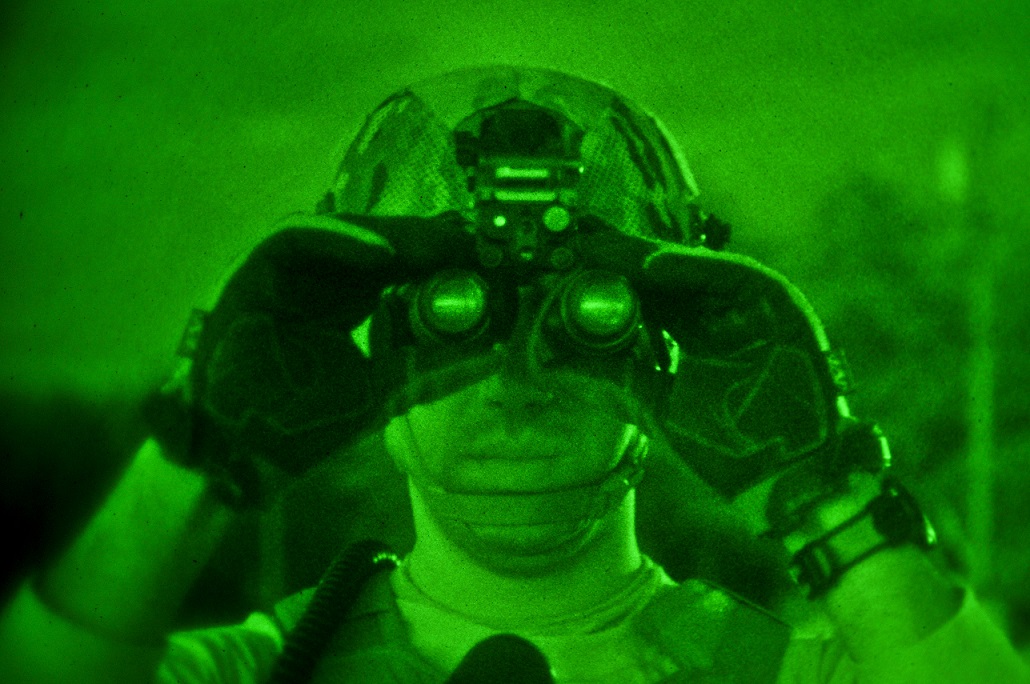This post is also available in:
 עברית (Hebrew)
עברית (Hebrew)
A new goggles technology helps US Marines identify potential buried explosive devices, find hidden objects in foliated areas and safely conduct tasks that require depth perception. The Marines will have better situational awareness on missions in dark areas thanks to the new night-vision goggles. The Binocular Night Vision Goggle II, or BNVG II, is a helmet-mounted binocular that gives operators improved depth perception at night, and uses white phosphor image intensification technology to amplify ambient light, with a modular thermal imaging overlay capability.
Marine Corps Systems Command began fielding the BNVG II to force reconnaissance and explosive ordnance disposal Marines this spring, and full operational capability is planned for early next year, according to defense.gov.
The model includes a binocular night-vision device and a clip-on thermal imager, or COTI. It amplifies the small amount of existing light emitted by stars, the moon’s glow or other ambient light sources and uses the light to clearly display objects in detail in very dark conditions.
The COTI uses heat energy from the Marine’s surroundings to add a thermal overlay that allows the image to be viewed more clearly, helping Marines with situational awareness in conditions with little to no light. The COTI intensifies Marines’ ability to see anything in dark conditions, rain, fog, dust, smoke and through bushes that the legacy binoculars couldn’t.
The BNVG II is a follow-on to the legacy, battle-proven AN/PVS-15 binocular, but offers more features, such as the COTI, for increased survivability.
The BNVD component is a compact, lightweight, third-generation, dual-tube night -vision goggle with an ergonomic, low-profile design. It offers superior situational awareness compared to the AN/PVS-15 used by reconnaissance Marines and the single-tube AN/PVS-14 monocular night-vision device used throughout the rest of the Marine Corps, officials said. It mounts to the enhanced combat helmet and may be used individually or in conjunction with the COTI.


























